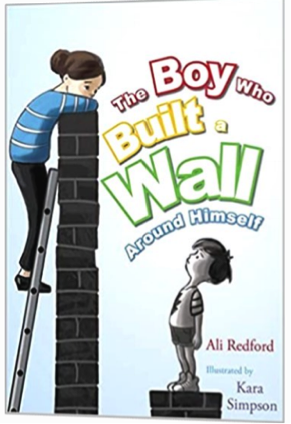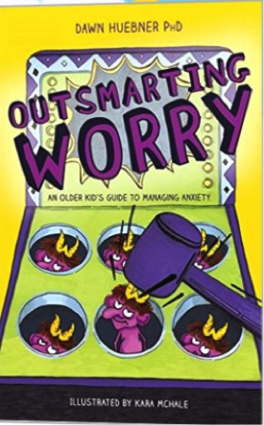Making a difference to children’s lives has always been at the heart of the public library offer. So much so, that the sector has created a promise that outlines the service every child and young person should expect from their local public library.
The Children’s Promise1 says that children and young people visiting our libraries should be:
- Inspired by a welcoming, inclusive, exciting and accessible environment, with a range of fiction and non-fiction books that mirror the diversity of our world and make reading irresistible.
- Engaged with imaginative digital opportunities to build their skills, literacy, knowledge and creativity.
- Encouraged to take part in formal and informal learning opportunities.
- Able to take part in a wide range of creative cultural experiences, including reading and book-based activities.
- Benefit from targeted library service activities that address disadvantage and improve their health and wellbeing.
- Actively involved in decisions about library service developments and offered opportunities to volunteer.
The Children’s Library Journey
Despite the challenges of austerity and the pandemic, the offer has held firm because libraries play a very special role in children’s lives. What other institution appears unchanging yet is agile enough to respond to children’s ever-changing needs as they grow? We describe this concept as the Children’s Library Journey, which starts as soon as a child is born. A time when new parents are encouraged to join library rhyme and story times with their babies to support the development of social skills, language and communication.
Later, as children start school, libraries support literacy by offering reading for pleasure activities and support for learning and homework. Teenagers use libraries for study, creative and social activities, volunteering, preparing for university and practising pre-employment skills. It all starts with a library card – for some children, the first badge of citizenship and a recognition of their place in the community.
The public library responds to public need
The last 18 months have presented significant challenges for all children, with social isolation, loss of learning and mental health issues all matters of national concern. And, even before the start of the pandemic, child poverty had risen sharply in some parts of the country.
The Child Poverty Action Group (CPAG) estimated that 4.3 million children (or 31% of all children) were living in poverty in the UK in 2019-2020, with children from Black and minority ethnic groups more likely to be in poverty (46% compared with 26% of children from White British families). Children in poverty are likely to be behind their peers in education, live in inadequate housing, have poorer health, risk chronic illnesses, have shorter life spans, a worse sense of wellbeing and low self-esteem.
Public Libraries are tailoring activities and resources to respond to children’s needs. For example, Reading Well for Children is a national public library scheme created by The Reading Agency, which supports the mental health and wellbeing of children. It offers children and their families information, advice and support for coping with feelings and worries, daily life and getting through a tough time. It includes a booklist chosen and recommended by leading health professionals from NHS England, Mind, the Royal College of General Practitioners and librarians, and co-produced with children and families.

Thanks to Department of Culture, Media and Sport funding, the books on the list are widely available through the public library network. Titles include The Boy Who Built a Wall Around Himself by Ali Redford, a picture book that uses a simple metaphor to explain how children who have had painful or traumatic experiences can build barriers between themselves and other people, and Outsmarting Worry by Dawn Huebner, which gives 9–13-year-olds techniques to cope with worries and fears.


Digital deprivation has been a major concern over the last year, and libraries are working hard to enable access to IT, WiFi and, in some circumstances, participating in device lending schemes. Libraries are also offering children the chance to develop key STEM skills through coding, Lego clubs and science and technology activities that continued online during lockdown.
But, of course, the core business of libraries is supporting reading and, at a time when children’s worlds have been so disrupted, books are offering children escape: the opportunity to dream, learn and grow. It has never been more important for public libraries to offer engaging and inspiring reading activities. Through lockdown, libraries delivered story and rhyme times online. We were incredibly grateful to publishers who permitted libraries to share books online and maintain all-important connections with local children.
Summer Reading Challenge 2021
As doors re-open, the annual Summer Reading Challenge has launched, and the public library network is delighted to welcome children into libraries. This year’s challenge, Wild World Heroes, was developed by The Reading Agency in partnership with WWF and is set in a fictional place called Wilderville. Children joining the Challenge will meet a series of characters and discover what can be done to make Wilderville better for the people and animals living there. Along the way, participants will be reading lots and collecting rewards for each book they read.
The Summer Reading Challenge is the UK’s major annual reading campaign of the year, which runs in 95% of English public libraries and, in normal years, regularly attracts over 700,000 participants. It is free to join, and this year children can also join online if they are not close to a library. The Challenge is special because it doesn’t just attract enthusiastic readers – libraries regularly report feedback from parents of how it encourages even reluctant readers to read more or stretch themselves to read complex or longer books.
Choice is fundamental to the Challenge, which I believe is one of the reasons for its success. Children can select any book they want to read, and the whole family gets involved, talking about the books with their children, encouraging them and giving them a sense of pride and achievement. This summer, many libraries are adding cultural and creative activities and contributing to holiday activities and food programmes through the Challenge. Anyone wanting to join the Challenge should visit their local library.
The Children’s Promise has given public libraries a strategic basis to build greater national and local partnerships, develop activities that reflect the changing needs of children and ensure quality services that value every child and give them the start in life they deserve.
Thank you for visiting our blog. Our vision here at Books2All is a world where every child finds the books that help them reach their true potential. If you have spare books in good condition at home that you think might be appropriate for school children, please sign up for our app’s pre-release waiting list. If you represent a school, please register to receive books for your students.
1. The Children’s Promise was created by The Association of Senior Children’s and Education Librarians (ASCEL) and is supported by Libraries Connected, the national charity for public libraries.

